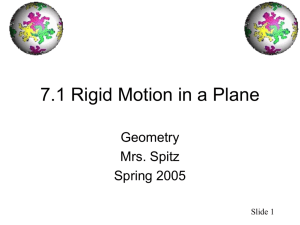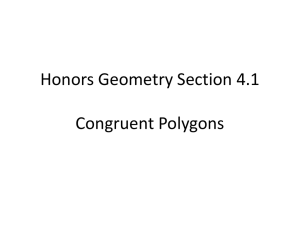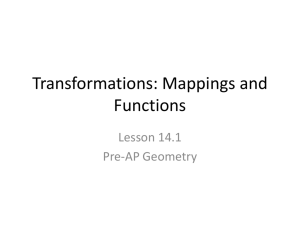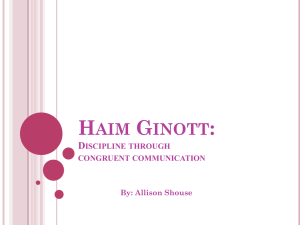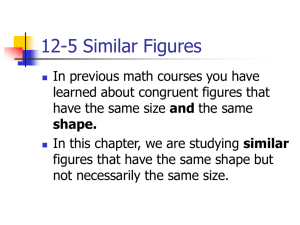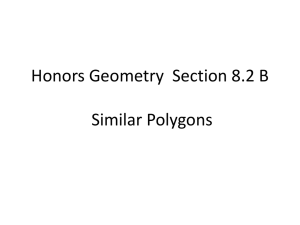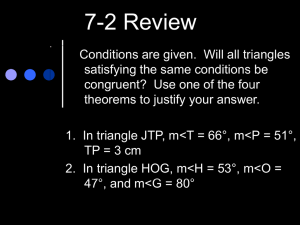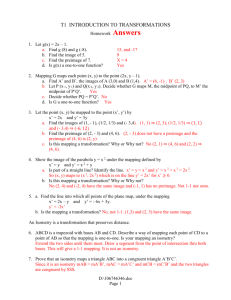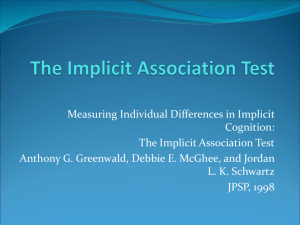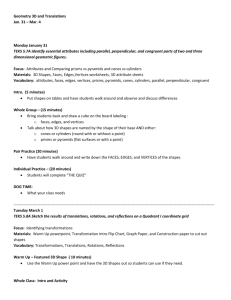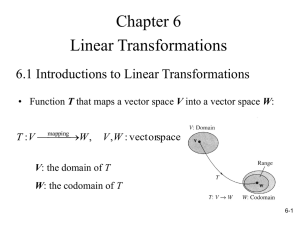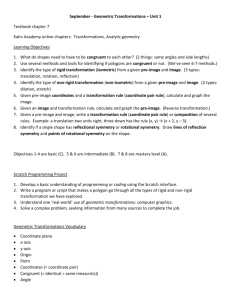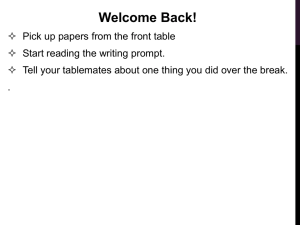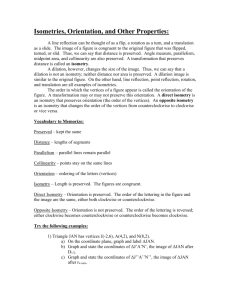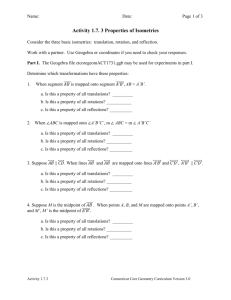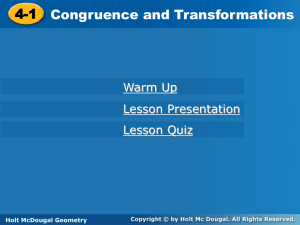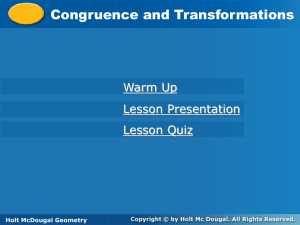4-1 congruence and transformations
advertisement
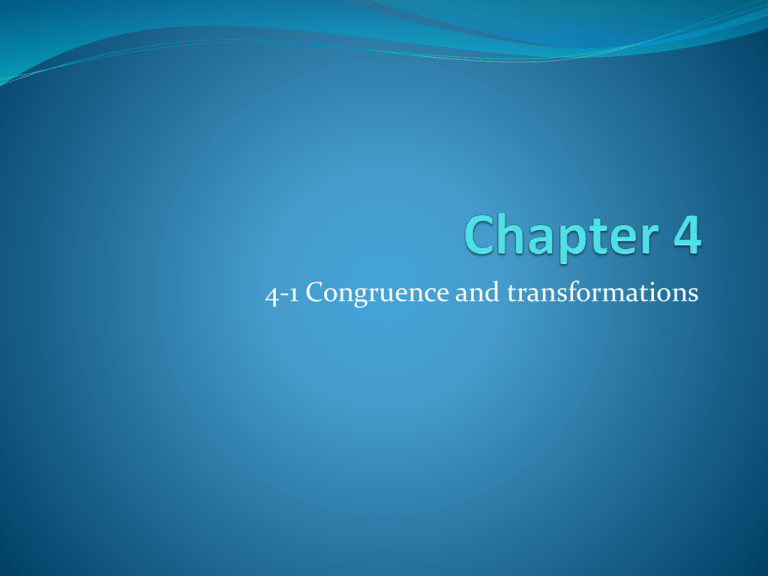
4-1 Congruence and transformations SAT Problem of the day Objectives Draw, identify, and describe transformations in the coordinate plane. Use properties of rigid motions to determine whether figures are congruent and to prove figures congruent. Transformations What is a transformation? Answer: is a change in the position, shape, or size of a figure. What are some types of transformations? Answer: translations(slides),reflections, rotations and dilations Example#1 Apply the transformation M to the polygon with the given vertices. Identify and describe the transformation. A. M: (x, y) → (x - 4, y + 1) P(1, 3), Q(1, 1), R(4, 1) translation 4 units left and 1 unit up Example#2 B. M: (x, y) → (x, -y) A(1, 2), B(4, 2), C(3, 1) reflection across x-axis Example#3 . M: (x, y) → (y, -x) R(-3, 0), E(-3, 3), C(-1, 3), T(-1, 0) 90°rotation clockwise with center of rotation (0, 0) Example#4 . M: (x, y) → (3x, 3y) K(-2, -1), L(1, -1), N(1, -2)) dilation with scale factor 3 and center (0, 0) Student guided practice Do problems 3 -6 in your book page 220 Types of transformations What is isometry ? An isometry is a transformation that preserves length, angle measure, and area. Because of these properties, an isometry produces an image that is congruent to the preimage. What is a rigid transformation? A rigid transformation is another name for an isometry. Transformations and congruence Example#5 Determine whether the polygons with the given vertices are congruent. . A(-3, 1), B(2, 3), C(1, 1) P(-4, -2), Q(1, 0), R(0, -2) The triangle are congruent; △ ABC can be mapped to △PQR by a translation: (x, y) → (x - 1, y - 3). Example#6 B. A(2, -2), B(4, -2), C(4, -4) P(3, -3), Q(6, -3), R(6, -6). The triangles are not congruent; △ ABC can be mapped to △ PQR by a dilation with scale factor k ≠ 1: (x, y) → (1.5x, 1.5y). Student guided practice Do problems 7 and 8 in your book page 220 Example#7 Prove that the polygons with the given vertices are congruent. A(1, 2), B(2, 1), C(4, 2) P(-3, -2), Q(-2, -1), R(-3, 1) △ ABC can be mapped to △ A′B′C′ by a translation: (x, y) → (x – 3, y + 1); and then △ A′B′C′ can be mapped to △PQR by a rotation: (x, y) → (–y, x). Example#8 Prove that the polygons with the given vertices are congruent: A(-4, -2), B(-2, 1), C( 2, -2) and P(1, 0), Q(3, -3), R(3, 0). The triangles are congruent because ABC can be mapped to A’B’C’ by a translation (x, y) → (x + 5, y + 2); and then A’B’C’ can be mapped to ABC by a reflection across the x-axis Student guided practice Do problemsd9 and 10 in your book page 220 Architecture question? Is there another transformation that can be used to create this frieze pattern? Explain your answer. Repeated reflections can create this frieze pattern; a reflection of any section over a line through either the left or right side of each section. Homework!!! Do problems even problems 13-24 in your book page 220 Have a great day!!!

